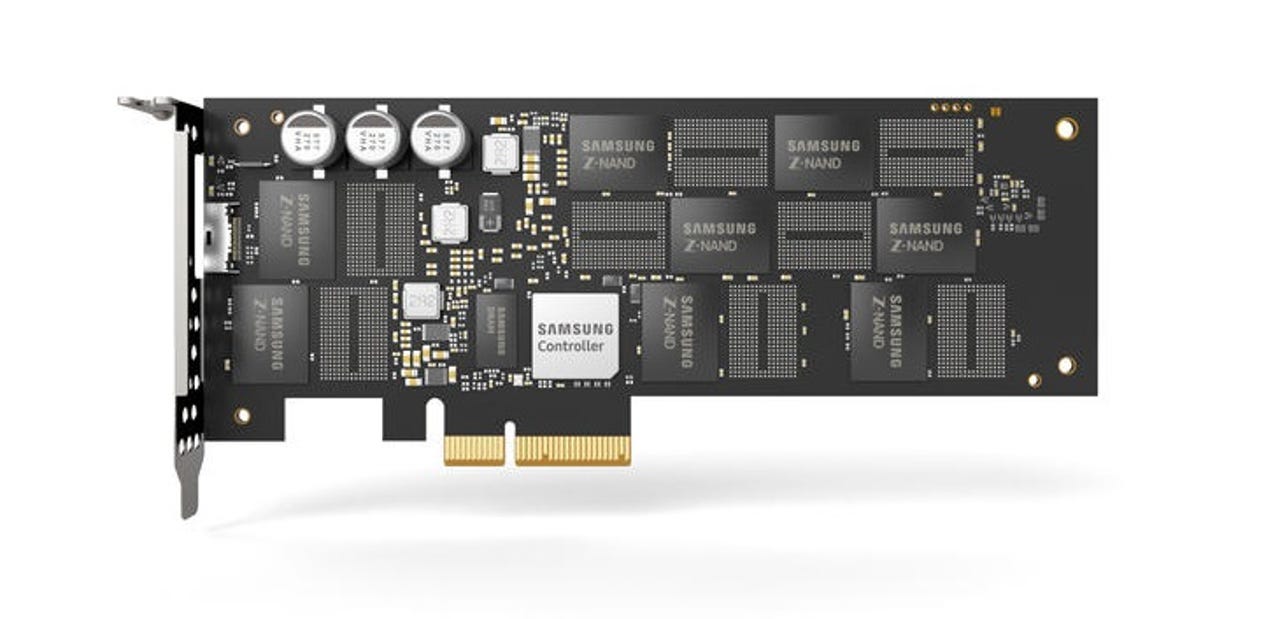Samsung launches 800GB Z-SSD for supercomputing


SZ985 boasts a ultra-low latency of 16 microseconds.
Samsung Electronics has launched an 800GB solid state drive, the SZ985 Z-SSD, aimed at supercomputing, the firm announced.
The new offering boasts five times less latency than of NVMe SSDs and is aimed at high-speed cache data and log data processing, the company said.
The single port, four-lane Z-SSD comes with Z-NAND with 10 times higher cell read performance than 3-bit V-NAND.
It has an ultra-low latency controller with 1.5GB LPDDR4 DRAM that allows 1.7 times faster random read performance at 750,000 IOPS and a write latency of 16 microseconds, five times less than NVMe SSD PM963.
It also has a random write speed of up to 170,000 IOPS.
It comes with a five-year guarantee for 30 drive writes per day or a total of 42 petabytes. It also has a mean time between failures of 2 million hours.
A 240GB version will also be introduced at the International Solid-State Circuits Conference 2018 next month.
Last week, Samsung unveiled 4K-ready 860 Pro and 860 EVO SSDs with V-NAND.
Last month, it began production of 512GB eUFS aimed at smartphones.
PREVIOUS AND RELATED COVERAGE
<="" p="" rel="follow">
- <="" p="" rel="follow"> <="" p="" rel="follow">
<="" p="" rel="follow"><="" p="" rel="follow"> <="" p="" rel="follow">Samsung spent $43.1b on semiconductors in 2017: Gartner
Samsung and Apple collectively spent $81.8 billion of semiconductors in 2017, accounting for 19.5 percent of the market, according to the research firm.
Samsung begins production of AI-boosted Exynos 9
Samsung's 10-nanometre Eynos 9 is a mobile application processor with a neural network-based deep-learning algorithm for intelligence image processing, used for facial recognition and AI features.
Samsung develops 'graphene ball' to speed up battery charging
Samsung Advanced Institute of Technology (SAIT) has synthesized a 'graphene ball' that can be used to make lithium-ion batteries charge five times faster.
Samsung's Micro LED bet will define its future in TVs
Samsung Electronics is going its own way with Micro LED in TVs, leaving behind OLED. The move will be a true test of the legitimacy of its number one position, and could pay off handsomely if it succeeds.
Why zinc-air batteries could make our smartphones cheaper and more efficient(TechRepublic)
Researchers at the University of Sydney have developed a method for recharging zinc-air batteries that could make them a more green replacement for lithium ion batteries in electronics.